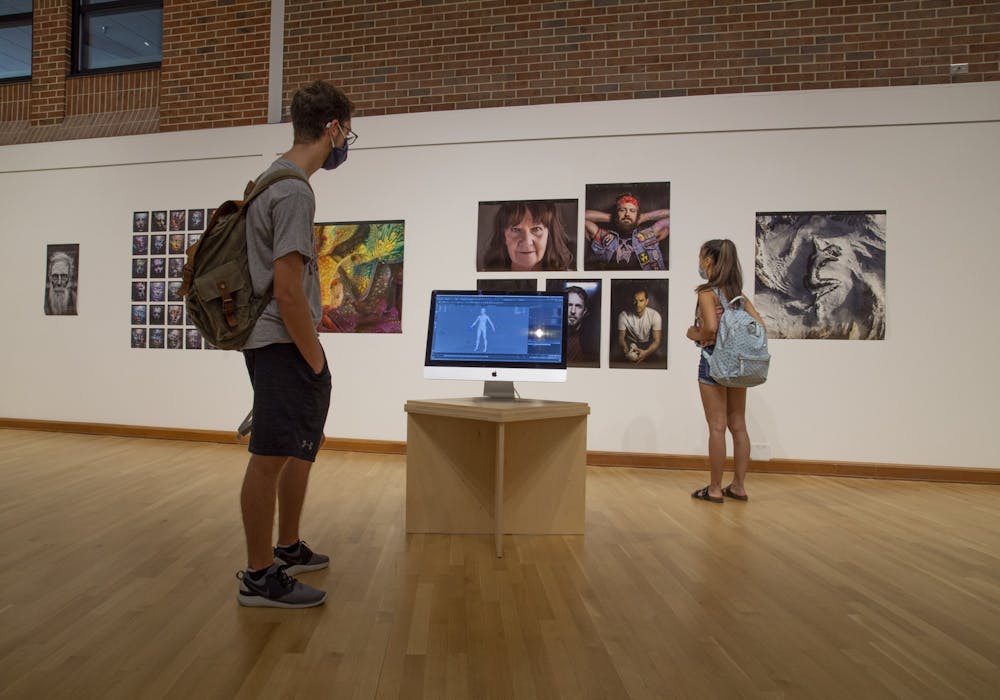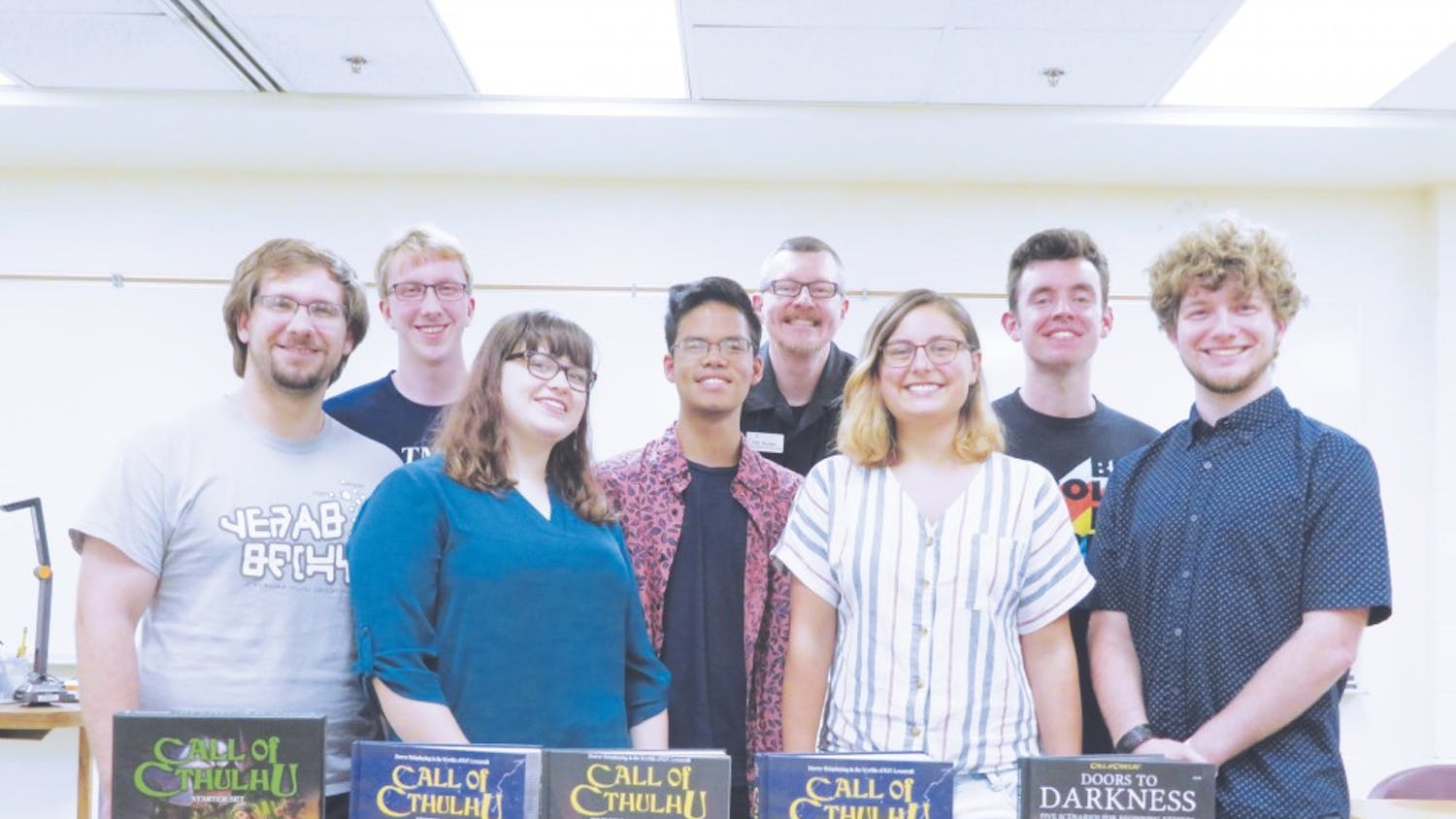The audience files in as the painter stands on stage, painting a phoenix before the crowd. However, the painter is sporting a VR headset and her brushes are remote controls. The phoenix she is painting is not composed of oil or watercolor, but instead a glittering, glowing, 3D vector.
This demonstration was part of “Ars Machina”, the newest exhibit in the Metcalf Gallery. It is a collaborative show, where a wide range of CGI art is displayed both in prints and on various screens throughout the Metcalf Gallery. The opening was on Friday, Aug. 21.
The exhibit has been a dream of Jamie Miles, assistant professor of art, for a while now. Miles and Metcalf Gallery Director Jeremie Riggleman were able to get the ball rolling. They started searching for artists. They were only expecting five or six, but ended up with 22 artists from 15 countries.
“It all came together virtually,” Miles said. “We received all these files digitally, from very trusting and generous artists, who were literally in places like Bangalore, India and Spain and Warsaw and Argentina, and the Dominican Republic — all over the place.”
Ballinger’s pieces in “Ars Machina” are whimsical illustrations and character studies he has recently been working on for various projects.
He talked about his favorite professor from Columbus Center for Art & Design, where he got his undergrad. Although many of his professors discouraged his draw towards cartoon characters, this professor helped him figure out his passions.
“Find somebody who will take the time to help you figure out what you are trying to do, where you are trying to go, and what your strengths are as a creative person,” He said. “That’s what he did for me, and that’s what I try to help my students do.”
Ballinger’s work is sorted into the narrative category in the show. The other two categories Miles chose to sort the art were fine art and visualization.
With such new and exciting technology, the conversation can quickly turn towards the power of the software. However, Miles’ central hope for “Ars Machina” was that it would spark curiosity in Taylor art students, and they would see the wide range of software simply as other mediums to create their art with.
On the opposite end, artist Maciej Stok-Stokowiec advises CGI students to make sure to take fine art courses.
“It expands what we see and gives us another point of view,” he wrote in his artist statement. “I think that painting, drawing, and traditional sculpting enhance our skills in CGI by giving them the unique style that comes out from us.”
Stok-Stokowiec, hailing from Poland, has been working with CGI for 10 years.
It’s the ability to host people like him that Miles finds so poetic about “Ars Machina”. Although the roots were originally laid last fall, the show has come to Taylor at the perfect time.
“We’ve ended up with this big robust show from people all over the place,” said Miles. “Professor Riggleman noticed just how beautiful of a thing that is to have a global art show during a global pandemic.”





